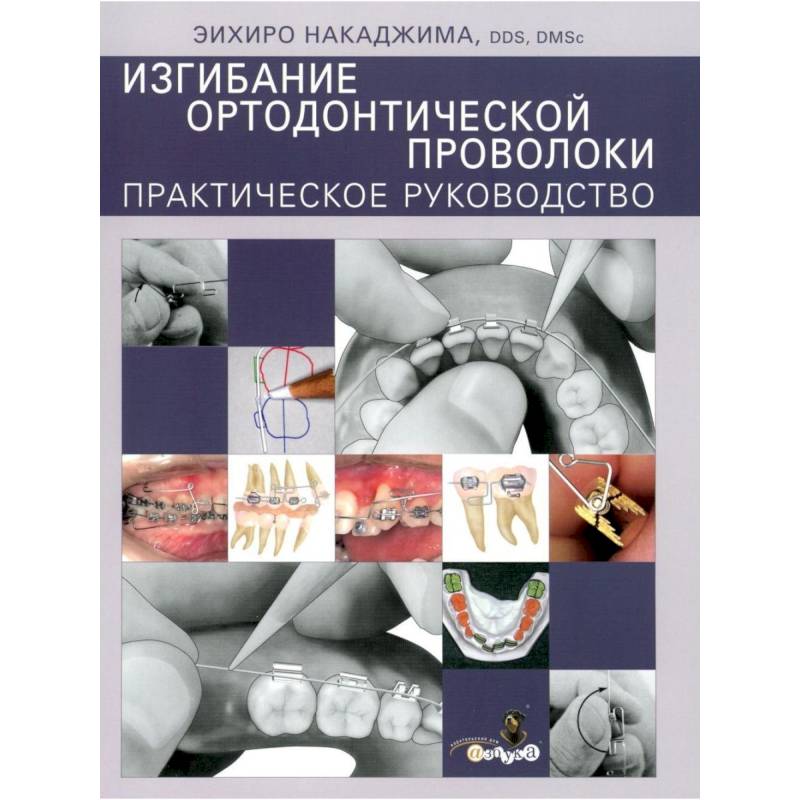Bending orthodontic wire. Practical leadership
Please sign in so that we can notify you about a reply
Many dentists believe that at present direct arcs have completely eliminated the need to use curved wire in orthodontic practice. Yes, their popularity is obvious. This technique involves the use of thin elastic straight wire, which is then replaced with a thicker one. Moreover, it does not always make it possible to carry out the required correction, taking into account the individual anatomical features of the skeleton, dysfunction and dimensions, which does not allow satisfying functional and aesthetic requirements in each particular case. It should also be noted that to a greater or lesser extent, such features are available in almost all clinical situations. On the one hand, the latest achievements in the field of material science contributed to the improvement of many clinical methods, and on the other hand, even the appearance of a super -elastic wire reduced, but did not completely eliminate the need to use the methods of bending wire.
Particular attention should be paid to braces. The force from the wire is transmitted to the periodont and alveolar bone by means of braces attached to the teeth. The shape and dimensions of the braces vary depending on the methods for which they are intended. Each bracket sets the vestibular-language and meisial-dystal slope, the direction of turning and has the appropriate design, but at the same time, many experts are limited to only one type of braces for most clinical situations without taking into account individual requirements. There are several braces. which set different values of vestibular-speaking and meisial-dystal tilt, depending on the planned removal or tooth preservation. If you leave aside the anatomical conditions and functional features of the patient, the dimensions and shape of the braces must correspond to at least the size and shape of the tooth crowns. Some manufacturers use epidemiological data to create braces intended for certain population groups. In particular, braces appeared a few years ago. which were proposed to use the Mongoloid race in patients, but the justification and validity of this approach are doubtful.
If there were only one size clothes in a universal store, this would significantly limit the audience of customers. Oddly enough, this approach does not seem absurd in modern orthodontics. Aggressive marketing of direct wire is largely due to the desire of manufacturers to increase sales, but inevitably leads to the substitution of priorities in our specialty. Many braces and methods of using direct wire are based only on epidemiological data, but do not take into account the individual biological characteristics of specific patients.
I believe that all braces and wires have the right to exist if they are easy to use and allow us to predictly get the desired result. In my own practice, I prefer to apply materials and methods that are not only predictable and effective, but are also based on strict biological principles. There is no need for "excesses", i.e. creating intricate and confusing bends of arcs. This guide is designed to facilitate the choice of the optimal method and can become a good guide for specialists in the field of orthodontics
Particular attention should be paid to braces. The force from the wire is transmitted to the periodont and alveolar bone by means of braces attached to the teeth. The shape and dimensions of the braces vary depending on the methods for which they are intended. Each bracket sets the vestibular-language and meisial-dystal slope, the direction of turning and has the appropriate design, but at the same time, many experts are limited to only one type of braces for most clinical situations without taking into account individual requirements. There are several braces. which set different values of vestibular-speaking and meisial-dystal tilt, depending on the planned removal or tooth preservation. If you leave aside the anatomical conditions and functional features of the patient, the dimensions and shape of the braces must correspond to at least the size and shape of the tooth crowns. Some manufacturers use epidemiological data to create braces intended for certain population groups. In particular, braces appeared a few years ago. which were proposed to use the Mongoloid race in patients, but the justification and validity of this approach are doubtful.
If there were only one size clothes in a universal store, this would significantly limit the audience of customers. Oddly enough, this approach does not seem absurd in modern orthodontics. Aggressive marketing of direct wire is largely due to the desire of manufacturers to increase sales, but inevitably leads to the substitution of priorities in our specialty. Many braces and methods of using direct wire are based only on epidemiological data, but do not take into account the individual biological characteristics of specific patients.
I believe that all braces and wires have the right to exist if they are easy to use and allow us to predictly get the desired result. In my own practice, I prefer to apply materials and methods that are not only predictable and effective, but are also based on strict biological principles. There is no need for "excesses", i.e. creating intricate and confusing bends of arcs. This guide is designed to facilitate the choice of the optimal method and can become a good guide for specialists in the field of orthodontics
Author:
Author:Накаджима Э.
Cover:
Cover:Soft
Category:
- Category:Medical Books
Publication language:
Publication Language:Russian
Paper:
Paper:Molded
Age restrictions:
Age restrictions:16+
ISBN:
ISBN:978-5-91443-017-4
No reviews found
